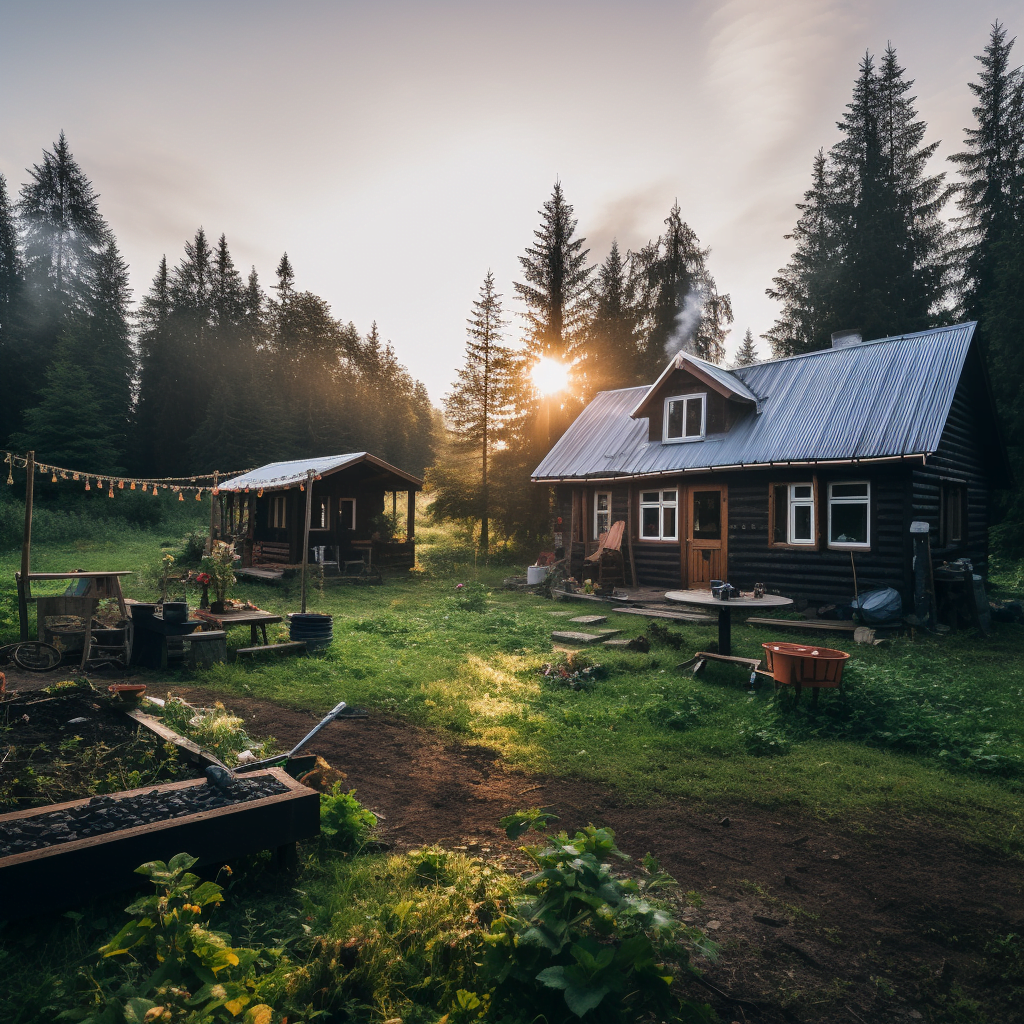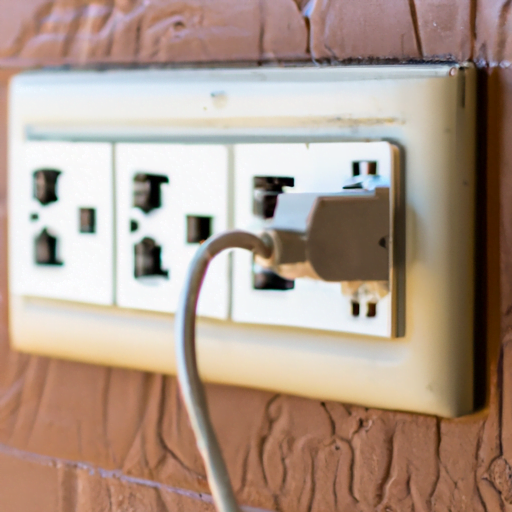Have you ever wondered what it means to live on the grid? With the rise of sustainable living and renewable energy sources, the concept of on-grid living has started to gain attention. But what exactly does it entail? In this article, we will explore the meaning of on-grid living in detail, discussing its benefits, challenges, and how it differs from off-grid living. Whether you are curious about adopting a more sustainable lifestyle or simply want to learn more about this trend, this article is for you.
Living on the grid refers to being connected to the local power grid and relying on it for your energy needs. This means that your home is connected to a centralized power system that distributes electricity to residential and commercial buildings. On-grid living typically involves using energy sources such as fossil fuels, nuclear power, or renewable energy generated by the grid. In contrast, off-grid living involves being self-sufficient and independent from the power grid, often relying on alternative energy sources like solar panels or wind turbines.
Throughout this article, we will delve deeper into the advantages and disadvantages of living on the grid, exploring the environmental, economic, and social implications. We will also discuss the various ways you can incorporate on-grid living into your lifestyle, from implementing energy-efficient practices to installing renewable energy systems. So, whether you are considering a shift towards on-grid living or simply want to better understand the concept, read on to discover more about this fascinating topic.
Introduction
Living on the grid refers to being connected to public utilities and relying on infrastructure for basic amenities. This lifestyle is the opposite of off-grid living, where individuals or communities are self-sufficient and independent from public utilities. In this article, we will explore the meaning and implications of living on the grid, looking at the advantages, disadvantages, components, benefits, challenges, sustainable practices, hybrid approaches, factors to consider, and different settings of on-grid living.
Understanding On-Grid Living
Definition of On-Grid Living
On-grid living is a lifestyle that involves being connected to public utilities and relying on infrastructure for essential services. This includes having access to electricity, water, sewage systems, and communication networks provided by the local government or private companies. Being on the grid means being part of a larger network that supports and provides these services to the community.
Advantages of On-Grid Living
One of the primary advantages of on-grid living is the convenience and reliability it offers. With access to public utilities, you can rely on a consistent power supply, uninterrupted water and sewage services, and convenient access to communication networks. Additionally, being on the grid often means having easier access to emergency services, such as fire departments and hospitals.
Disadvantages of On-Grid Living
Living on the grid is not without its drawbacks. One significant disadvantage is the dependency on external systems. If any part of the grid fails, such as a power outage, it can disrupt your day-to-day life until the issue is resolved. On-grid living also comes with the potential for higher costs, as you are required to pay for the services provided by utility companies. Moreover, being reliant on infrastructure can make you vulnerable to interruptions caused by natural disasters or other unforeseen events.
Components of On-Grid Living
Access to Public Utilities
One of the main components of on-grid living is having access to public utilities. This includes a connection to the electrical grid for power supply, access to a centralized water supply, and a sewage system for waste management. These utilities are essential for meeting basic human needs and maintaining a comfortable lifestyle.
Reliance on Infrastructure
Living on the grid entails relying on the existing infrastructure in place for the delivery of essential services. This includes power lines, water treatment plants, sewage systems, and communication networks. The availability and reliability of these infrastructure components play a significant role in the quality of life for individuals living on the grid.
Availability of Basic Amenities
A crucial component of on-grid living is the availability of basic amenities. This includes access to running water, heating and cooling systems, lighting, and communication devices. By being connected to the grid, you can enjoy the comfort and convenience of these amenities in your daily life.

Benefits of On-Grid Living
Access to Reliable Power Supply
Living on the grid ensures access to a reliable power supply. Utility companies are responsible for maintaining and distributing electricity, allowing you to power your home, appliances, and electronic devices without interruption. This reliable power supply enables you to carry out daily activities more efficiently and be productive in your work or leisure pursuits.
Connection to Water and Sewage Systems
On-grid living provides a connection to centralized water supply and sewage systems. This means you have a consistent supply of clean water for drinking, cooking, and washing. It also means you can rely on a well-maintained sewage system to handle waste disposal efficiently and hygienically.
Convenient Access to Communication Networks
Living on the grid grants you convenient access to communication networks. This includes services such as landline phones, internet connectivity, and cellular networks. These communication tools allow you to stay connected with friends, family, and colleagues, access important information, and navigate the digital world more easily.
Challenges of On-Grid Living
Dependency on External Systems
One of the challenges of on-grid living is the dependency on external systems for essential services. When the infrastructure fails or undergoes maintenance, you may experience interruptions in services such as electricity, water, or internet connectivity. This dependency can be problematic during emergencies or natural disasters when these services may be compromised or unavailable.
Vulnerability to Power Outages
Living on the grid makes you vulnerable to power outages. Storms, accidents, or infrastructure issues can cause electricity to be temporarily unavailable. During these outages, you may experience inconveniences, such as the inability to use electrical appliances, disrupted communication, or loss of perishable food items.
Potential Higher Costs
On-grid living often comes with higher costs compared to off-grid living. This is because utility companies charge fees for the provision of services, such as electricity and water supply. These costs can vary depending on factors such as location, consumption, and infrastructure maintenance expenses. However, the convenience and reliability of these services usually outweigh the higher costs for many individuals.
Sustainable Practices in On-Grid Living
Renewable Energy Integration
One way to incorporate sustainable practices into on-grid living is by integrating renewable energy sources. Installing solar panels or wind turbines can help reduce reliance on the electrical grid and lower electricity bills. By generating clean energy, you contribute to the reduction of carbon emissions and the overall environmental impact of energy consumption.
Water Conservation Strategies
Conserving water is another sustainable practice that can be adopted in on-grid living. Implementing water-saving devices, such as low-flow faucets and toilets, can significantly reduce water consumption. Additionally, practicing mindful water usage, such as taking shorter showers and fixing leaks promptly, minimizes wastage and promotes a more sustainable lifestyle.
Efficient Resource Management
Efficient resource management is essential in on-grid living to reduce waste and promote sustainability. This includes practicing energy-efficient habits, such as turning off lights when not in use and using energy-efficient appliances. Additionally, properly recycling waste, reducing single-use items, and composting organic material are steps that contribute to a more sustainable lifestyle.
Hybrid Approaches to On-Grid Living
Combining On-Grid and Off-Grid Systems
Hybrid approaches to on-grid living involve combining elements of on-grid and off-grid systems. For example, individuals or communities may generate their electricity through solar panels or wind turbines while still maintaining a connection to the electrical grid as a backup or during periods of high energy demand. This approach allows for increased self-sufficiency and the potential to reduce reliance on the grid while still enjoying the convenience it offers.
Benefits of Hybrid Approaches
Hybrid approaches to on-grid living offer several benefits. By integrating renewable energy systems, individuals can reduce their carbon footprint and lower their energy bills. The backup connection to the grid ensures a continuous power supply, particularly during times when renewable energy generation may be insufficient. Furthermore, hybrid approaches provide flexibility and adaptability for individuals to choose the level of self-sufficiency that aligns with their needs and preferences.
Examples of Hybrid Solutions
There are various examples of hybrid solutions in on-grid living. Some individuals or communities may use solar water heaters to reduce energy consumption for heating water while still relying on the electrical grid for other needs. Others may have a backup power system, such as a home battery or generator, to provide electricity during outages or when renewable energy generation is insufficient. These hybrid approaches allow individuals to enjoy the benefits of renewable energy while still maintaining a connection to the grid for reliability and convenience.
Factors to Consider in On-Grid Living
Location and Availability of Infrastructure
When considering on-grid living, the location and availability of infrastructure are crucial factors to consider. Urban areas tend to have well-established and reliable infrastructure networks, while rural areas or remote locations may have limited access to public utilities. The availability and reliability of infrastructure in the desired location should be assessed to ensure a smooth on-grid living experience.
Costs and Affordability
The costs associated with on-grid living should also be taken into account. Utility bills, such as electricity and water, can form a significant part of monthly expenses. Additionally, the initial investment in equipment, such as solar panels or energy-efficient appliances, should be considered when evaluating the affordability of on-grid living. Budgeting and financial planning are essential steps in determining the feasibility of this lifestyle choice.
Personal Preferences and Lifestyle
Personal preferences and lifestyle choices play a crucial role in deciding whether on-grid living is the right choice. Some individuals prioritize convenience and reliability and are willing to pay for the services provided by utility companies. Others may value self-sufficiency and sustainability, opting for off-grid living or hybrid approaches. Understanding your own preferences, priorities, and values is essential in determining the most suitable living arrangement.
On-Grid Living in Different Settings
Urban Areas and City Living
On-grid living in urban areas offers the most developed and reliable infrastructure. Cities generally have extensive electrical grids, water treatment plants, and communication networks. This means residents in urban areas usually enjoy uninterrupted and high-quality services. However, the higher population density and increased demand for resources can also lead to higher costs and the potential for service interruptions during peak usage periods.
Rural Communities and Small Towns
On-grid living in rural communities or small towns may present some challenges due to the limited availability of infrastructure. These areas may lack extensive electrical grids, reliable water supply systems, or advanced communication networks. Residents in these settings may experience occasional service interruptions or higher vulnerability to natural disasters. However, many rural communities emphasize self-sufficiency and community resilience, which can add a unique and fulfilling aspect to on-grid living.
Suburban Neighborhoods
Suburban areas often offer a middle ground between urban and rural settings for on-grid living. Suburbs typically have established infrastructure networks while maintaining a quieter and more spacious living environment compared to cities. This can provide residents with a balance of convenience, reliability, and a sense of community. Suburban neighborhoods often have access to local amenities, schools, and parks, making them attractive options for individuals or families seeking a suburban lifestyle while staying connected to the grid.
Conclusion
Living on the grid means being connected to public utilities and relying on infrastructure for essential services. While on-grid living offers convenience, reliability, and access to modern amenities, it also comes with dependence on external systems and the potential for interruptions. By implementing sustainable practices, considering hybrid approaches, and evaluating factors such as location, costs, and personal preferences, individuals can make informed decisions about on-grid living. Ultimately, choosing the right lifestyle depends on striking a balance between convenience, sustainability, and self-sufficiency.




